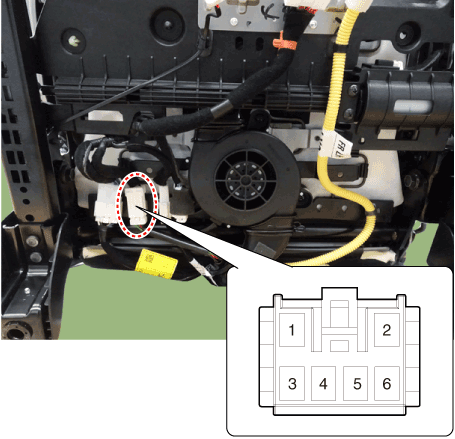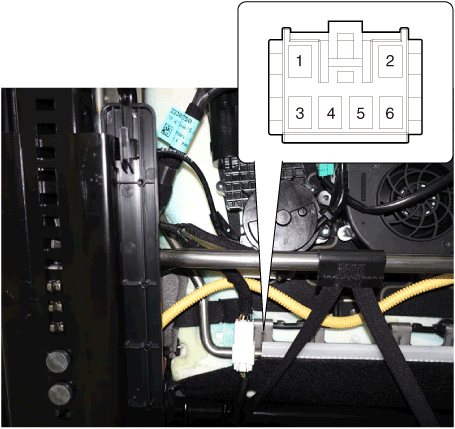Hyundai Palisade: Seat Electrical / Seat Heater (Air Ventilation)
Hyundai Palisade (LX2) 2020-2025 Service Manual / Body Electrical System / Seat Electrical / Seat Heater (Air Ventilation)
Components and components location
| Components |
Driver/Passenger Seat Heater
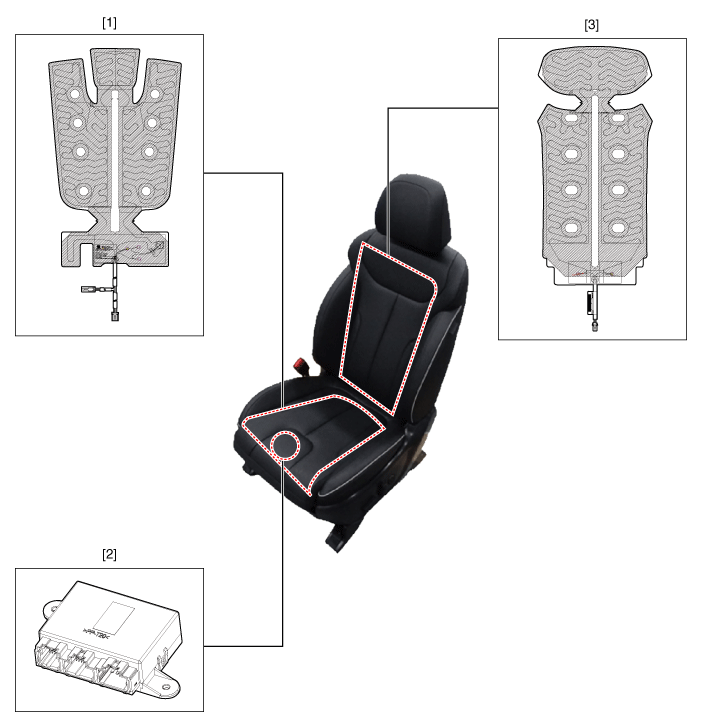
| 1. Seat cushion heater 2. Seat heater unit (Passenger only) |
3. Seat back heater |
Second Line Seat Heater
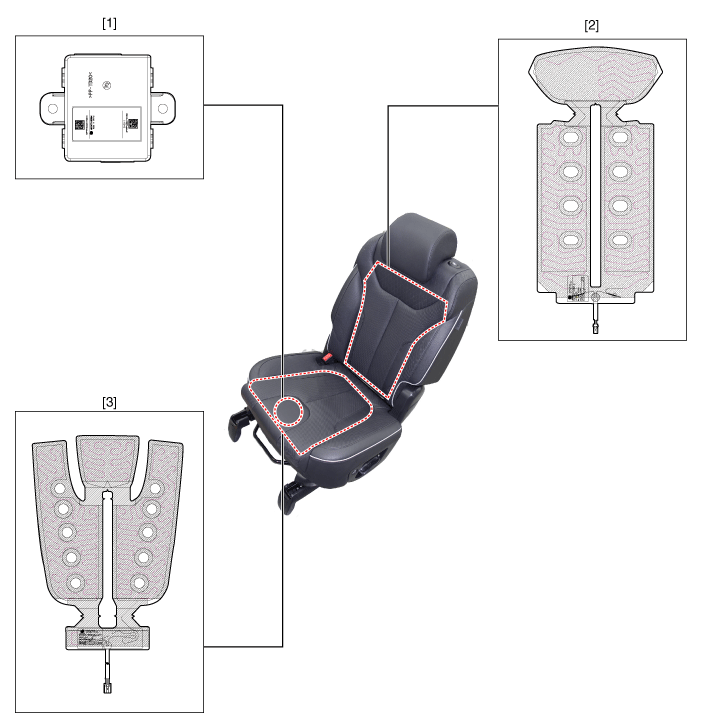
| 1. Seat heater unit (Passenger
only) 2. Seat cushion heater |
3. Seat back heater |
Schematic diagrams
| Circuit Diagram |
Driver/Passenger Seat Heater
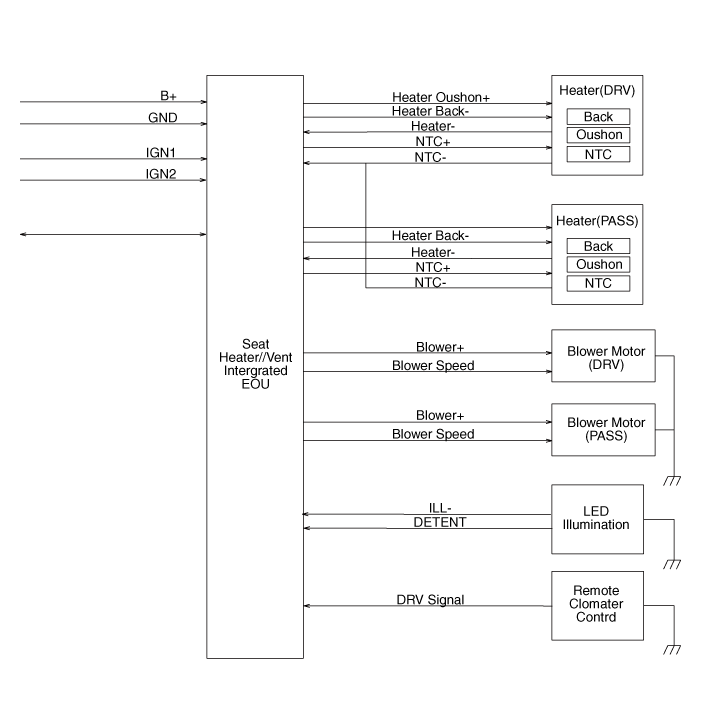
Second Line Seat Heater
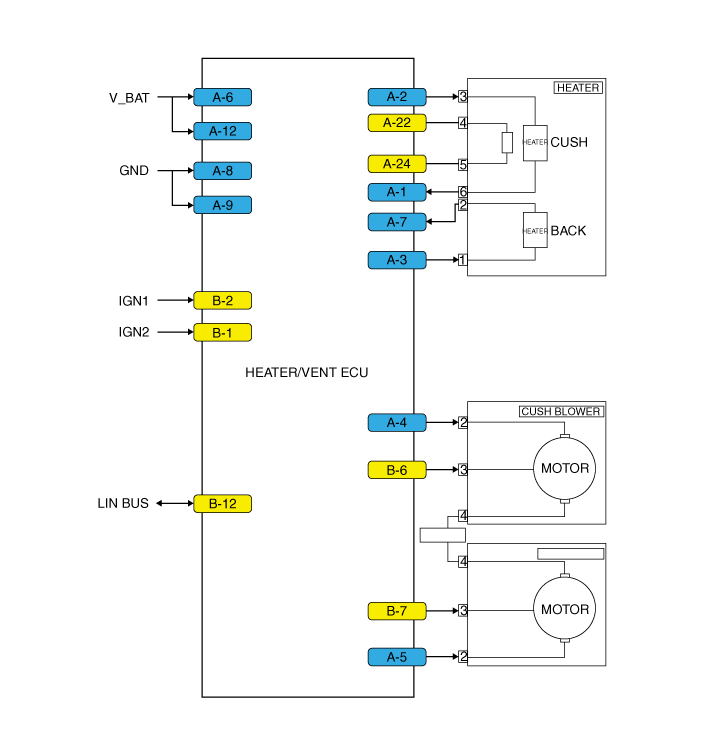
[Air Ventilation Seat Control Unit (Driver/Passenger Seat Heater)]
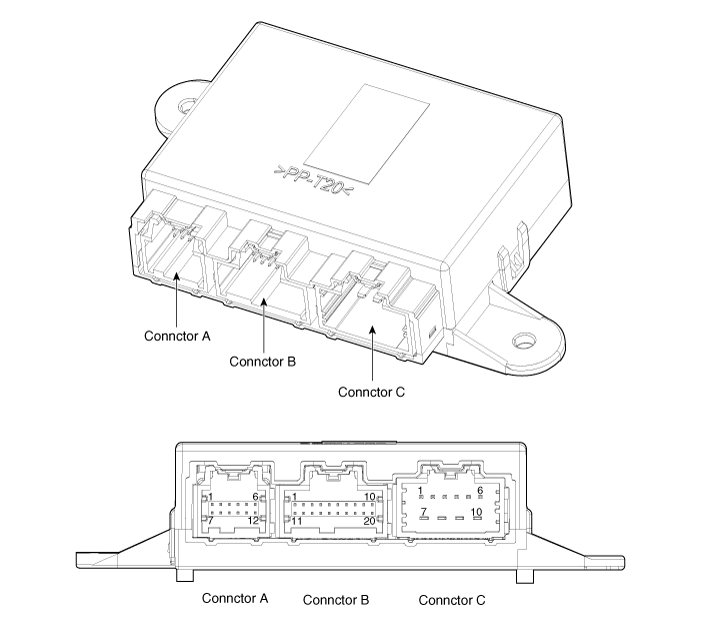
|
No |
Connector A |
Connector B |
Connector C |
|
1 |
- |
- |
Driver cushion heater |
|
2 |
- |
- |
Driver back heater |
|
3 |
- |
- |
Assist cushion heater |
|
4 |
DETENT |
- |
Assist back heater |
|
5 |
Illumination |
- |
Driver blower |
|
6 |
Driver vent control PWM |
LIN |
Assist blower |
|
7 |
Assist heater power |
- |
Battery (+) |
|
8 |
Driver heater power |
- |
Driver heater (-) |
|
9 |
- |
- |
Ground |
|
10 |
- |
IGN 1 |
Assist heater (-) |
|
11 |
- |
- |
|
|
12 |
- |
- |
|
|
13 |
|
- |
|
|
14 |
- |
||
|
15 |
- |
||
|
16 |
- |
||
|
17 |
NTC (-) |
||
|
18 |
Assist NTC (+) |
||
|
19 |
Driver NTC (+) |
||
|
20 |
IGN 2 |
[2nd line Air Ventilation Seat Control Unit
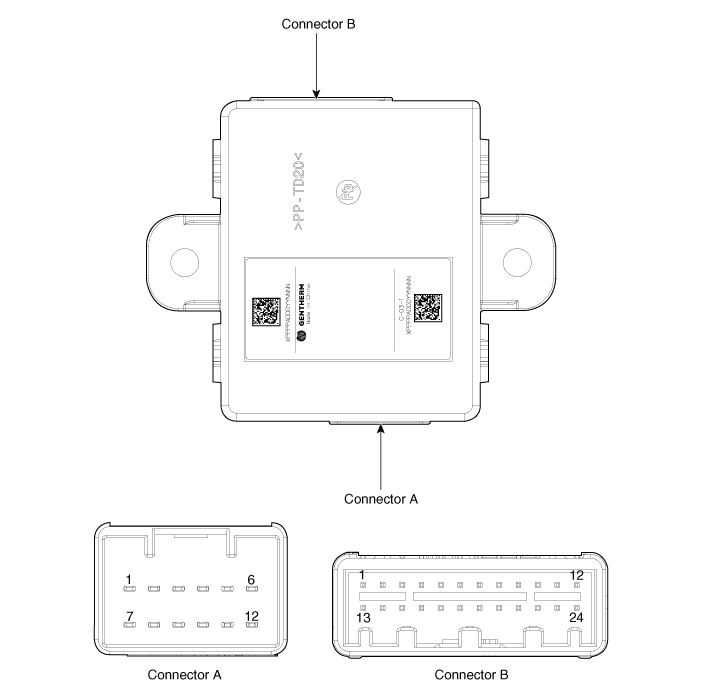
|
No |
Connector A |
Connector B |
|
1 |
Heater (-) |
Heater vent unit IGN 2 |
|
2 |
Cushion heater power |
Heater vent unit IGN 1 |
|
3 |
Seat back heater power |
- |
|
4 |
Cushion blower power |
- |
|
5 |
Seat back blower power |
- |
|
6 |
Heater vent power |
Cushion blower VSP |
|
7 |
Heater (-) |
Seat back blower VSP |
|
8 |
Heater vent ground |
- |
|
9 |
Heater vent ground |
- |
|
10 |
- |
- |
|
11 |
- |
- |
|
12 |
Heater vent Power |
LIN |
|
13 |
|
- |
|
14 |
- |
|
|
15 |
- |
|
|
16 |
- |
|
|
17 |
- |
|
|
18 |
- |
|
|
19 |
- |
|
|
20 |
- |
|
|
21 |
- |
|
|
22 |
NTC (+) |
|
|
23 |
- |
|
|
24 |
NTC (-) |
Repair procedures
| Inspection |
Front Seat
| 1. |
Check for continuity and measure the resistance between terminals.
|
| 2. |
Operate the seat heater after connecting the connector, and then check
the thermostat by measuring the temperature of seat surface.
|
2nd Line Seat
| 1. |
Check for continuity and measure the resistance between terminals.
|
 Seat Heater (Non-Air Ventilation)
Seat Heater (Non-Air Ventilation)
Components and components location
Components
Driver/Passenger Seat Heater
1. Seat cushion heater
2. Seat heater unit (Passenger only)
3...
 Air Ventilation Seat
Air Ventilation Seat
Components and components location
Components (1)
Front seat
1. Air ventilation seat blower
2. Air ventilation seat control unit (Passenger only)
3...
Other information:
Hyundai Palisade (LX2) 2020-2025 Owner's Manual: Surround View Monitoring
The Surround View Monitoring system can assist in parking by allowing the driver to see around the vehicle. Push the button (1, indicator ON) to operate the system. To cancel the system, push the button again (1, indicator OFF). The system is activated when: The engine is ON The shift button is in D (Drive), N (Neutral) or R (Reverse) Vehicle speed is under 10 mph (15 km/h) The system is deactivated when: You press the button (1) again Vehicle speed is over 10 mph (15 km/h) Information When vehicle speed is over 10 mph (15 km/h), the system will turn off...
Hyundai Palisade (LX2) 2020-2025 Service Manual: Components and components location
..
Categories
- Manuals Home
- 1st Generation Palisade Owners Manual
- 1st Generation Palisade Service Manual
- Emergency liftgate safety release
- Wireless Cellular Phone Charging System
- Child-Protector Rear Door Locks
- New on site
- Most important about car
Do Not Install a Child Restraint in the Front Passenger's Seat
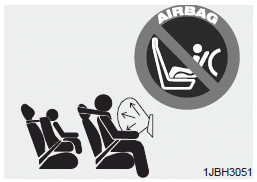
Even though your vehicle is equipped with the OCS, never install a child restraint in the front passenger's seat. An inflating air bag can forcefully strike a child or child restraint resulting in serious or fatal injury.
Copyright © 2025 www.hpalisadelx.com

